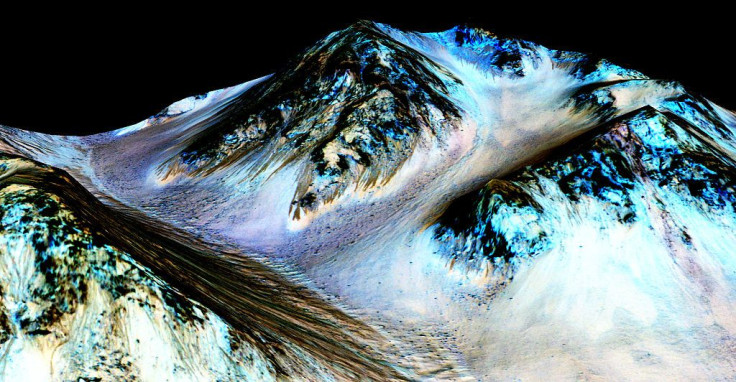Mars Planet Finally Has Evidence Of Vast Underwater System, Alien Life Might Exist

The European Space Agency (ESA) has found new evidence to believe that Mars has an existing “planet-wide” groundwater system. This information can help researchers understand the Red Planet’s origin and quite possibly determine if there’s actual life on Mars.
“Early Mars was a watery world, but as the planet’s climate changed this water retreated below the surface to form pools and ‘groundwater.’ We traced this water in our study, as its scale and role is a matter of debate and we found the first geological evidence of a planet-wide groundwater system on Mars,” European Space Agency’s researcher, Francesco Salese, said in a press release.
The information showed that Mars wasn’t always the dusty red planet that it is now known to be. In fact, the ESA evidence pointed out that massive bodies of water actually existed both above and below the planet. The space agency presented data gathered using three powerful instruments: A High-Resolution Stereo Camera (HRSC), NASA’s High-Resolution Imaging Science Experiment (HiRISE) and the Context Camera aboard NASA’s Mars Reconnaissance Orbiter.
Using images from ESA's Mars Express and @NASA’s MRO, scientists have found evidence of an ancient planet-wide groundwater system on #Mars.
— ESA (@esa) February 28, 2019
Read more: https://t.co/06dCzWxTQk pic.twitter.com/TiXhLq92DN
ESA explored two dozen craters in Mar’s northern hemispheres and this resulted in discovering features that suggested the craters contained pools of water but receded over time. The findings, which were published in the Journal of Geophysical Research: Planets, pointed out that the Red Planet used to have a water reserve between 4,000 and 5,000 meters below the planet’s sea level.
The craters present an interesting picture. Some channels show that they were carved by water, some show that there is evidence of valleys formed by erosion and there are even shorelines that strongly suggest the existence of water. The supposed water in these craters was dated to have been present in Mars between three to four million years ago.
Discovering the evidence of water is quite exciting because it opens another possibility that life in Mars actually existed or still exist. Aside from water, the scientists also discovered minerals that once indicated to the emergence of life on our planet. The minerals were found in five of the craters examined by ESA.
"Findings like this are hugely important; they help us to identify the regions of Mars that are the most promising for finding signs of past life," Dmitri Titov, a project scientist with Mars Express, said in a statement.
© Copyright IBTimes 2025. All rights reserved.





















